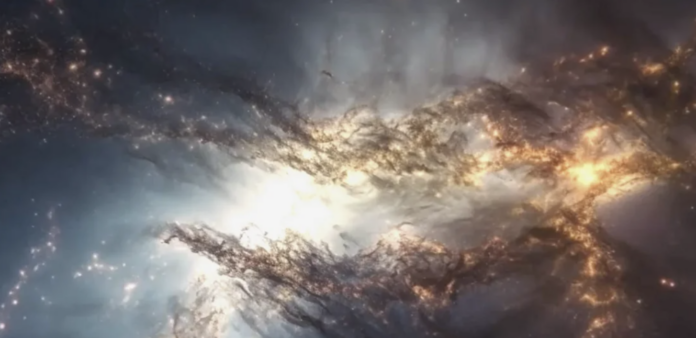Scientists have made a breakthrough discovery: low-frequency gravitational wave that is likely caused by supermassive, black holes. These waves create ripples on the fabric of space time.
Albert Einstein published in 1915 his General Theory of Relativity. In it, he showed that the gravity of massive objects can warp the fabric of time. Gravitational waves will be created if these massive objects collide.
The Laser Interferometer Gravitational-Wave Observatory was the first to discover gravitational waves in 2015.
LIGO defines gravitational wave as “ripples of space-time resulting from some of the most violent, energetic and violent processes in the Universe”.
The LIGO explains that the strongest gravitational wave is produced by cataclysmic phenomena such as colliding supernovae, colliding blackholes and colliding neutron star collisions. Other gravitational wave sources are predicted to come from the rotation of non-perfect sphere neutron stars, or even remnants of the gravitational radiation left over after the Big Bang.
Scientists announced on Wednesday that they have finally discovered these low-frequency gravitational wave – likely confirming Einstein’s theory from over 100 years ago. After 15 years of data gathering, the discovery was made.
In a press release, scientists from the North American Nanohertz Observatory for Gravitational waves announced:
Scientists with the North American Nanohertz Observatory for gravitational Waves (NANOGrav), who closely observed stars known as pulsars, which act as celestial clocks, made this groundbreaking discovery. The new gravitational wave detections — ripples in space-time– are the most powerful measurements ever made. They carry a million-fold more energy than the single bursts from gravitational-wave experiments like LIGO and Virgo.
Maura McCLaughlin, codirector of NANOgrav’s Physics Frontiers Centre, said that these are the strongest gravitational wave known to exist. “Detecting these gargantuan waves requires patience and a massive detector.”
Chiara Mingarelli, a NANOGrav scientist, said: “It is like a choir with all of these supermassive pair black holes chiming at different frequencies.” This is the first evidence of the gravitational waves background. “We’ve opened up a new window for observing the universe.”
Scientists describe low-gravitational wave as a low “hum.”
Sarah Vigeland, University of Wisconsin-Milwaukee chair of the NANOGrav detector working group, said: “Now that gravitational wave evidence has been found, we will use our observations in order to investigate the sources of this hum.”
Scientists think the low-gravitational wave source is supermassive, black holes colliding in a death spiral.
NANOGrav explained that “Those black hole are truly colossal. They contain billions of solar masses.” Nearly all galaxies have one or more of these behemoths in their core, including the Milky Way. Two galaxies merging can cause their supermassive dark holes to meet and orbit one another. As time passes, the orbits of black holes tighten up as stars and gas pass between them and steal energy.”
Luke Zoltan Kelley is a theoretical astrophysicist and NANOGrav member at Northwestern University. He said that it’s possible that low-gravitational wave could be produced by cosmic strings and dark matter that formed shortly after the Big Bang.
Scientists were able find low-gravitational wave using data from 67 Pulsars. These pulsars are essentially a galaxy-wide telescopic telescope.
NANOGrav reported that “They closely studied pulsars – the ultra-dense remains of massive stars which went supernova.” “Pulsars are like radio beams that shoot out from their magnetic poles. They act as stellar lighthouses.” The pulsars spin rapidly (often hundreds of times per second) and these beams are seen from Earth as pulses of radio waves.
The statement stated that “the pulses arrive like perfectly timed metronomes on Earth.” The timing is so exact that, when Jocelyn Bell first measured the first radio waves from pulsars in 1967 astronomers believed they were signals from an alien civilisation.
The collision of massive cosmic objects may have caused the signals to be disrupted over the last 15 years.
Jeff Hazboun is an astrophysicist from Oregon State University, and a member the NANOGrav Team.
According to Phys.org, “as a gravitational waves passes between us and a pulsar it throws the radio wave timing off.” This is because, as Albert Einstein predicted gravitational wave ripples through the cosmos stretch and compress the space, changing the distance radio waves must travel.
NPR reported, “What they discovered is a pattern that shows deviations from expected pulsar arrival timings. This suggests gravitational wave are jiggling the space-time like it’s an enormous serving of Jell O.”
Popular Mechanics stated, “Here’s the secret: Light travels through space with a finite velocity. Light traveling from the pulsar to Earth always takes the same time. If suddenly there is more space between a pulsar, for example, and Earth, the light will travel longer from there to here and the clock-like time will be thrown out.
Mingarelli said, “What comes next is everything.” “This is only the beginning.”




